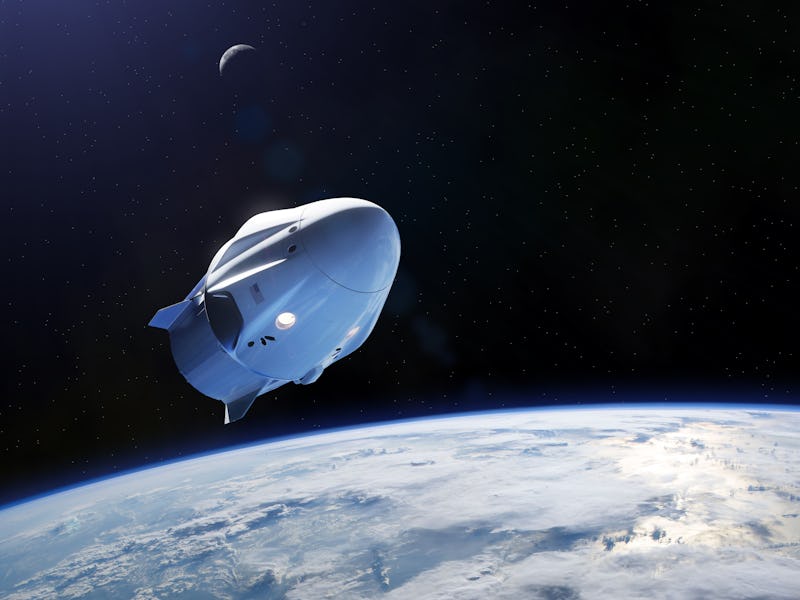Could SpaceX be the future of health tech in space?
Conducting more medical experiments on the ISS bodes well for future trips to Mars.

SpaceX has dreams of putting boot-prints on the Martian surface, but its most recent in a number of NASA resupply missions suggests that the space company could have another destiny: advancing the future of medicine in space.
SpaceX's Dragon resupply craft will be making its way some 250 miles back home to Earth on Monday morning, carrying with it over 4,000 pounds of scientific experiments. Among its precious cargo is a medical experiment designed to test how the human heart will survive in microgravity.
SpaceX began shuttling cargo to the ISS for NASA in 2012 and transported this medical experiment (along with space slime, bioprinted organs, and lettuce plants) to the ISS on March 6th. The return of these experiments and samples on Monday marks the final flight of the company's initial contract. While this contract may be complete, SpaceX is among a number of space contractors who will be continuing these shuttle trips starting with a new contract this year that is expected to extend until 2024.
The Dragon spacecraft and its cargo will push away from the ISS starting at just before 10 AM EST and plans to splashdown in the Pacific Ocean, just southwest of Long Beach, California, a little before 4 PM EST.
With its return to Earth, Dragon will also be returning the results of the Engineered Heart Tissues study. This study was designed to investigate how heart tissue can be cultivated and survive in a microgravity environment, like that of the ISS. But, instead of sending up biological heart tissue from a human patient, a team of NASA scientists designed 3D tissues using heart cells derived from adult stem cells.
NASA scientists in charge of the study sent samples to the ISS aboard Dragon in March while keeping control samples on Earth. The scientists hypothesize that the heart tissue aboard the ISS will have a significant change in function, structure and gene expression compared to those kept on Earth. The results shuttled back home by Dragon on Monday could help researchers better understand how astronauts will react to long-duration flights, such as a mission to Mars.
Dragon will also be bringing home the results of a 3D-bioprinting study aimed at learning how to better print human organs and tissues in space. The results of this study will help future astronauts print personalized medication as well as food while on the ISS or on a long-duration mission.
The Inverse Analysis
Before SpaceX or NASA can successfully send a human mission to Mars -- or even a sustain mission on the lunar surface -- it will be imperative to continue conducting these types of medical trials aboard the ISS with increased regularity. The human body is incredibly fickle, and sending astronauts into the unknown of space is simply not an option. By continuing to assist NASA in transferring these medical experiments to and from the ISS, SpaceX will be improving its chances of launching its own crewed missions in the future.